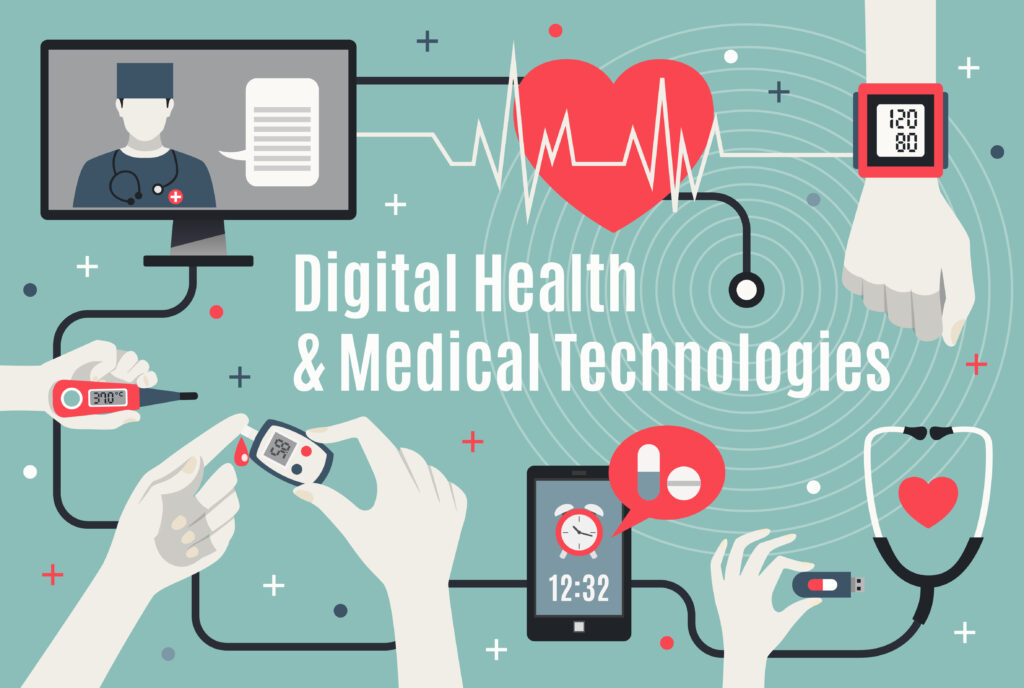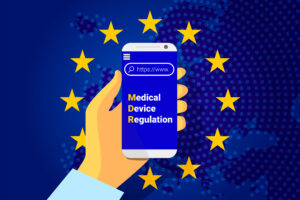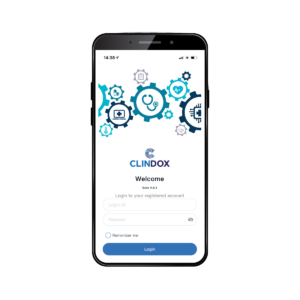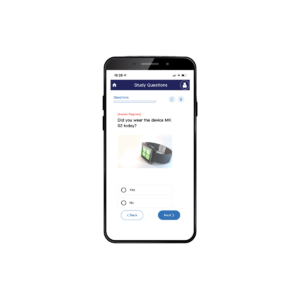ARTICLE 9: The true impact of MDR: the Clinical Affairs perspective
For the ninth article of our series of articles on Managing Data and eClinical solutions for Medical Device Companies, the CRFWEB team is delighted to welcome a contribution from the Secret Clinical Affairs Director. By maintaining anonymity our highly experienced Clinical Affairs professional speaks candidly and provides some reallly fascinating insights about how the new regulatory regime will impact the market for medical devices in Europe over the coming years.
Discover how MDR will shape the tough decisions needed to maintain profitability.
We’ll explore the challenges presented by MDR to the MedTech sector – from the largest multi-national to the micro SME.
??? Introducing the Secret Clinical Affairs Director ???
The Secret Clinical Affairs Director has some 30 years’ experience helping to bring new drugs and devices safely to market. A medical Doctor with a PhD in Pharmacology, his career began leading a large hospital trials office before branching out to take senior Clinical Affairs roles with a number of leading medical device companies. He also has deep experience of the European regulatory landscape having had leadership roles at one of Europe’s foremost Notified Bodies.
The Secret CAD. A guiding light through the maze of MedTech clinical affairs.

The road to hell is paved with good intentions
In the coming years it will become increasingly clear that this famous, if unattributed proverb, could have been written with MDR specifically in mind. Even as the merits of MDR have been furiously debated over recent years, few of us would have disagreed that the regulation of medical devices in Europe needed a significant overhaul. Whilst the widespread injury and injustice resulting from the notorious PIP breast implant scandal a decade ago is often cited as compelling evidence of the need for better regulation, it’s important to note that this was an example of appalling fraud rather than regulatory failure – or companies gaming the system. What’s more relevant is the steady drip of failure due to devices being granted market access based on inadequate data to support claims of safety and efficacy.
MDD allowed devices to be CE marked through Grandfathering or by claiming equivalence. I would not disagree that many foundational data sets were in the past too often lacking in the levels of scientific and statistical rigour that would be expected today. It’s precisely these issues that MDR sought to solve but in doing so has inadvertently sowed the seeds of what many of us in the industry believe will be unprecedented market turmoil.
Many larger companies have been putting significant resources behind MDR for some time now; MDR regulatory departments of 30-40 people are common now for the major players. To be able to CE-mark under MDR, it’s essential that a company’s QA system be MDR compatible. This is no small undertaking and while we, and others, have this largely under control, many smaller companies simply lack the resources necessary to get their QMS up to MDR level.
Rather than rehash many of the more theoretical concerns about MDR, I’d like to explore some of the genuine concerns of industry professionals who I’ve discussed these matters with recently, not just for some of the larger players, but also the possible impact on smaller companies. Please read on; I’d welcome your thoughts, too, so please comment below.

Market Contraction
As you will surely know, after 26 May 2024, no device may be released in the EU without a CE-mark based on MDR. All devices already in the supply chain at that date with CE-marking based on MDD must reach the end-user by 26 May 2025, after which date, they will be removed.
To retain CE-marking, MDR will demand far greater levels of PMCF for many more devices than has been the case under MDD. Where market access based on equivalence or Grandfathering there will be a need to gather new data through PMCF activities that may or may not require engagement with Competent Authorities, depending on local legislation. This is particularly the case with drug/device combinations. Additionally, MDR makes demands that devices should be “State-of-the-Art”. The trouble with this stipulation is that it’s not clearly defined. For example, in Poland bare metal stents could be considered State-of-the-Art, but in countries such as the Netherlands, they are not. It will be the controlling governmental agency of the country accrediting the NB that will determine what State of the Art is for their inhabitants.
Even where there is a willingness to engage with this level of complexity to retain market access, it’s anticipated that it could be very difficult to find hospitals and clinicians – and patients – willing to undertake the type of longer-term study many devices will require, at a viable cost and within an acceptable timeframe. Where Competent Authority engagement is required, the delay this is likely to entail alone may sound the death knell for many devices.
So, for many of the larger companies with hundreds, if not thousands, of products on the market, my expectation is that there will be wholesale product withdrawals. I’m aware of one leading manufacturer that expects to withdraw over two and a half thousand orthopaedic devices. All companies’ resources are finite; it’s not only the financial cost and the cost in terms of people that’s at issue, it also opportunity cost. Why expend these precious resources retaining market access for a low value device when they could put to work achieving market access for new, higher value products? For many of the bigger players that’s an easy question to answer. For smaller companies with a limited number of products, walking away is far less of an option. Whilst it was always recognised that some older – or lower value – devices would be withdrawn, I believe that the scale of product discontinuation is likely to be far greater than expected. Similarly, many of the lower cost “me too” products – essentially copies that relied on equivalence claims solely will also cease to be available.
CE-marking loss: collateral damage
Many products with a CE Mark can command a premium price in markets outside of Europe such as India. Without a CE Mark they will be forced to compete on price with lower cost equivalents. As CE mark represents a certain quality level, I anticipate that lower quality devices will be used in patients in those non-EU countries.
Heading West?
Currently, the standard approach to placing products on the global market is to seek an EU CE-mark first. Although complex on some levels it’s been less expensive and generally quicker than seeking approval in the US and the experience gained in Europe can be used successfully to support regulatory approval from the FDA. That’s set to change. The increased burdens presented by MDR have flipped the process and many companies will now first seek to achieve FDA approval, followed by approval in key Asian markets and only then approval in the EU. It’s important to note, too, that there’s a clarity to the US process; with 100% transparency of what the clinical data must be obtained, US market approval is very predictable. FDA approval of a study plan can of itself increase the value of a company. The process in the EU offers no such clarity – there’s no equivalent “planning approval” stage under MDR. This spiralling growth in both cost and complexity will all but guarantee a product shortage in Europe – and specifically of leading-edge devices which will instead benefits patients elsewhere first. In all businesses, though, investment requires confidence. This dynamic may well be undermined or even flipped in coming years by moves in the US to re-visit FDA regulations for MedTech.
CRO Bonanza?
It’s been confidently predicted that MDR will be a windfall for the CRO sector, as well as associated niche players such as providers of regulatory consultancy. Many smaller companies simply won’t have the internal bandwidth to manage the additional burdens of MDR in the round, and specifically, the need to generate new data to conform with MDR PMS/PMCF requirements. However, it seems from the discussions I’ve had with some key players in the CRO sector that everything remains eerily quiet. In reality, many of the biggest companies have already developed or are developing sizable MDR teams to fully scope out a comprehensive MDR strategy, and that work is now ongoing. Whilst the CRO sector may benefit in time (not least because there is real value in allowing independent oversight of MDR PMCF activities, (even for larger companies) that time is not yet. A lot of smaller companies are waiting to see how official advice develops before committing resources to developing their MDR response. A key concern for smaller SMEs is CRO capacity; the sector is growing, but not sufficiently fast enough yet to meet the MDR challenge. More established players WILL make sure they are properly resourced and so, while waiting for clarity makes sense, the longer a company waits, the greater the risk of not being able to find a suitable CRO partner.

We need to talk about Notified Bodies
Notified Bodies (NBs) have been given a central role in the MDR regulatory process. Concerns about the low numbers to date (24) that have been fully accredited need not be aired again here. What is also at issue is an apparent decline in acceptable standards for NBs as the EU seeks to ramp up the numbers. This is in direct contradiction to a stated aim of MDR – that all NBs should audit to the same standard. There are some important considerations to bear in mind. First is to recognise that the medical device sector is a complex ecosystem in which individuals can and do migrate between differing roles and responsibilities. Like me and many of my colleagues, it’s not unusual for Clinical Affairs professionals to spend time working for regulatory agencies, NBs and consultancies before returning to manufacturers to cash in the value of their experience. NBs, in particular, struggle to retain a cadre of qualified senior professionals to direct engagement with industry and Competent Authorities to navigate complex processes such as MDR approval. If you have the skills, it makes sense for you to sell them to the highest bidder – be that a manufacturer or a big CRO. This is only exacerbated by a general shortage in Europe of qualified talent. So, while there may be boots on the ground, the concern is that there is a lack of deep expertise and experience which will only lead to delay. Thirdly, and perhaps most importantly in the long run, there is some uncertainty around the role of the NBs in the future. One of the many tensions created by MDR is the uncertainty around the legitimacy of the NBs adjudications. The EU is assembling expert panels that can challenge the NBs opinion as to the validity of data produced and make recommendations concerning how to mitigate perceived shortfalls. The members of these oversight panels are expected to be, somewhat miraculously, unblemished by any suspicion of conflict of interest – tantamount, really, in today’s world to having no relevant experience. What’s more, it’s really not clear what weight this advice carries; the NB does not have to adjust its position, but if it does not, will some Competent Authorities choose to challenge the NBs adjudication? It’s simply not clear. Some seasoned and perceptive insiders I’ve spoken with see this ambiguity as the beginning of a process of bringing approvals for medical devices under the direct control of Competent Authorities as is the case now with drugs. Many in the EU parliament consider the lack of consistent competence and ethical reliability (let’s say) as key issues behind the failure of many devices under MDD. However, most competent authorities lack the levels of skills and expertise to be able to provide this oversight at the moment, but this could be the direction of travel.
Fourthly and prosaically, there are unavoidable commercial considerations that will hamper engagement with NBs for many of the smaller companies. NBs have to make money and the truth is that MDR compliance is resource intensive and not very profitable, certainly when compared to more traditional auditing activities such as MDSAP. MDSAP compliance is a must have for many of the larger device manufacturers as it’s essential for gaining approval in Canada, but also, it’s hugely beneficial for gaining approval in the US, Australia, Japan, and Brazil. It’s a good gig for the NB –a well understood process with a clear outcome that bills well; why not place your scarce resources there?
Also, for an NB, it will be entirely natural to favour larger organisations for MDR approvals. The depth of understanding and planning in-house will be there, a well-resourced expert team to work with and excellent documentation. They can be sure of their fees being paid regularly and on time. What’s not to like?
Ongoing concerns with capacity and capability, a lack of clarity concerning adjudications and commercial considerations further reducing access adds up to a perfect storm for the SME sector when it comes to engaging with NBs. It seems that the EU has not yet woken up to this unfolding crisis. Some would say, it’s being wilfully blind in the pursuit of a longer-term plan to bring the process under the aegis of the Competent Authorities. Either way, there will be many companies feeling a lot of pain over the next two years as they seek a partner for MDR compliance. There’s not much you can do about this looming capacity crunch except to act now. As Picasso said: “Only put off until tomorrow what you are willing to die having left undone”!
The Big Freeze
In the short term, MDR will kill product line evolution for current CE-marked devices. The legislation is crystal clear. Significant changes must lead to recertification which means moving to MDR. No material change in a CE-marked device will be allowed without MDR compliant data being made available that confirms at worst no change in the efficacy/safety profile. Sometimes change is forced upon manufacturers as component sub-contractors go bust or are unable to supply for other reasons. What will happen? Again, lots of devices will be withdrawn.
The impact of UDI
How well were the practicalities of providing a Unique Device Identification number thought through? For some types of devices, it just won’t be a practical at all and again they will simply be withdrawn.
Don’t forget IVDR
May 2022 sees the introduction of the new In Vitro Device Regulation. To date 80% of disposables and re-sterilization products are self-certified. Under IVDR this will drop to 20%. Where will the NB capacity be to deal the influx of requests for regulatory partnering come from?
Known unknowns, unknown unknowns, and lost opportunity
We live in an era when Governments and Competent Authorities are exerting vigorous downward pressure on the cost of healthcare. It’s clear that as health claims an ever-larger proportion of GDP this is unavoidable and desirable. Yet at the same time, Governments have a responsibility to ensure that their populations have access to the best available technologies. This is a dynamic tension that in the best of all possible worlds would foster technical and commercial ingenuity within the manufacturing sector AND the development of high quality, fit-for-purpose risk-based oversight. It’s a delicate balance and no-one would claim we have completely right today. However, organic evolution, rather than wholesale revolution is surely the best way of achieving improvement in highly complex systems; it needs to be said again that MDR is emphatically not that.
What we know we don’t know about how MDR will actually be implemented is surely concerning enough. What’s clear is that there will be a massive transfer of value away from us manufacturers to the advisory and regulatory-proxy sectors to such a degree that Europe is very likely to see a shortage of devices and wholesale company failure in the next five years. MDR is a leap into the unknown and as such there are about to be impacts and unintended consequences that have yet to reveal themselves. Technological innovation continues to afford ever greater opportunities for improved health outcomes for an increasingly aging EU population, but the benefits of these opportunities may well be choked off in the near future by overzealous, over complex, and burdensome regulatory processes. Manufacturers are behind the aim of ensuring safer, more effective devices and no doubt the EU is bound to clarify and finesse the process in the direction of reducing unsustainable economic and human resource impacts as real-world issues force the hand of regulators and legislators. It needs to happen at a far quicker pace than the development of MDR!
In the mid-1980s a dedicated global group of computer scientists initially back by the US, the UK and France – later enthusiastically embraced by the EU – decided the world needed to create a global system for computer networking – OSI or Open System Interconnection. A fabulously expensive talkfest for academics, consultancies, manufacturers, and regulators ensued but by the mid to late 1990s it was, to all intents and purposes, dead. The Internet (or more precisely TCP/IP – a cheap, agile if simpler alternative created by a small number of academics and commercial enterprises supported by DARPA in the US) had triumphed. As the top-down “let’s try to give everyone everything they need” approach succumbed to a slow death by committee, one of the Internet’s chief advocates, Einar Stefferud, pointedly noted “OSI is a beautiful dream, and TCP/IP is living it! Whilst developing an effective way for computers to talk to each other was never likely to put anyone’s health at risk, it is a cautionary tale of how easily noble and laudable aims can stifle innovation. Risk always needs to be minimized but it has to be delicate and proportionate if the benefits of innovation are to be realized.


How CRFWEB can help you
Clindox has a natural advantage over many of our competitors as we can leverage the benefits of:
– Long established, low cost-base development and support centres of the highest calibre
– High degree of sponsor self-sufficiency for study builds (with cost-effective client onboarding processes and expert support as required)
– Solution stack delivered through a simple, flexible SaaS model
Objectively, cost-plus – the true driver obscured by the smoke and mirrors of pricing plans – favours our offer and to this end you will find our proposals will be far simpler than any of our competitors and notable by the absence of arbitrary, hard-to-justify significant variability.
All in all, we know that with our low cost-base and our ongoing commitment to self-sufficiency, simplicity and transparency, we will always provide an excellent value proposition without compromising on features or quality… whichever sector you’re from, and whatever your study or investigation needs are.









